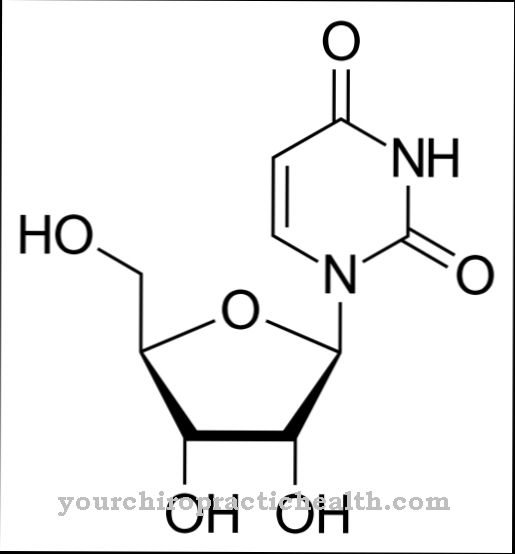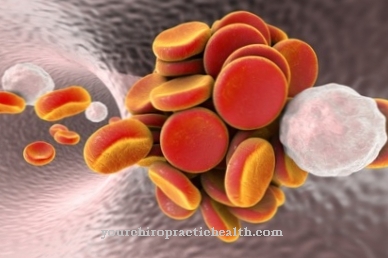The Macrolide antibiotics are antibiotics that have a bacteriostatic effect and have a macrolide. They inhibit the protein synthesis of the bacteria. The first and best known macrolide antibiotic is erythromycin. Macrolide antibiotics are widely used in children.
What are macrolide antibiotics?
Macrolide antibiotics (abbreviated: Macrolides) are bacteriostatically effective antibiotics. They represent their own "classification" within the various antibiotics. The common abbreviation macrolide is, in a narrower sense, the name for a circular molecule, the macrolide, that occurs in all macrolide antibiotics. Macrolide antibiotics have a favorable spectrum of activity with few side effects and are therefore well suited for use in children.
However, resistance to macrolide antibiotics is increasing. Many bacteria are already resistant to macrolide antibiotics, which is due to the fact that a modification of the ribosomal enzymes is sufficient to acquire resistance. The acquisition of resistance is therefore relatively easy. Furthermore, there is a so-called cross-resistance between the various macrolide antibiotics. This means that once a bacterium is resistant to a macrolide antibiotic, it is resistant to all macrolide antibiotics.
The "prototype" of the macrolide antibiotics is erythromycin, which is obtained from a type of fungus. There are also antibiotics josamycin and spiramycin, which are also obtained from fungal species. In an effort to improve the spectrum of activity and pharmacokinetic properties, the semi-synthetic derivatives roxithromycin, azithromycin and clarithromycin were developed.
Pharmacological effect
Macrolide antibiotics are bacteriostatically effective. They inhibit the protein synthesis of the bacteria. This happens through an attachment to the 50S subunit of the ribosomes. In doing so, they block the enzyme translocase, which prevents the polypeptide chain from migrating and growing. This results in the bacteriostatic effect of the macrolide antibiotics. They are particularly effective against metabolically active bacteria.
The macrolide antibiotics are generally lipophilic and therefore distribute well in the tissue after absorption in the gastrointestinal tract. Excretion is mostly cheap (via the bile). The macrolides are broken down in the liver. They are metabolized by the enzyme system CYP3A4 during biotransformation.
When reducing drugs taken or used at the same time, there may be interference. The breakdown of one of the drugs is delayed.
Medical application & use
Macrolide antibiotics are effective against gram-positive cocci and rods as well as against gram-negative cocci. They are also effective against Legionella pneumophila, Bordetella pertussis, mycoplasmas, spirochetes, chlamydia and Haemophilus influenzae.
The indications can be derived from the spectrum of activity of the macrolide antibiotics. It should be noted, however, that the semi-synthetic macrolide antibiotics roxithromycin, clarithromycin and azithromycin have a broader spectrum of activity against gram-negative bacteria than erythromycin, josamycin and spiramycin.
Systemically, erythromycin is indicated for bronchitis, pneumonia, pertussis (whooping cough), otitis media (otitis media), sinusitis (sinusitis), acne vulgaris, conjunctivitis (conjunctivitis) due to chlamydia, diphtheria and urethral inflammation due to chlamydial urethral plasm.
As an alternative to penicillins z. B. in penicillin allergy, erythromycin is also used for the therapy of pharyngitis (inflammation of the throat), tonsillitis (tonsillitis), scarlet fever, erysipelas (wound rose) and syphilis.
Azithromycin, a semi-synthetic derivative from the group of macrolide antibiotics, can be used for infections of the upper respiratory tract, including inflammation of the sinuses (sinusitis), inflammation of the throat (pharyngitis) and inflammation of the tonsils (tonsillitis). Infections of the lower respiratory tract, including bronchitis and pneumonia, acute otitis media, skin and soft tissue infections, and uncomplicated genital infections caused by Chlamydia trachomatis or Neisseria gonorrhoeae (non-multi-resistant strains) can also be treated with azithromycin.
In comparison with erythromycin, a slightly expanded spectrum of activity of azithromycin can be seen. Furthermore, azithromycin has a significantly longer half-life. For this reason, it can be used as a "three-day antibiotic": only three tablets are administered every 24 hours, but the effect lasts for 10 days due to the long half-life.
Risks & side effects
The possible side effects of macrolide antibiotics are harmless. For this reason and because of the broad spectrum of activity, macrolide antibiotics are often used in children. The most common side effects include gastrointestinal discomfort, e.g. Diarrhea, nausea and vomiting. Furthermore, hypersensitivity reactions are possible with existing hypersensitivity (allergy) to macrolide antibiotics. Liver damage is also one of the rare side effects.
It should be noted, however, that the individual antibiotics from the group of macrolides can also have side effects that go beyond this. These can be found on the package insert and can be obtained from your doctor and pharmacist.
Furthermore, interactions (interactions) with other drugs are possible. There are also contraindications. However, these cannot be cited in general terms for the group of macrolide antibiotics, as they are different for each macrolide antibiotic.
All of these antibiotics have in common that they must not be used in the event of hypersensitivity to a macrolide antibiotic.













.jpg)

.jpg)
.jpg)











.jpg)